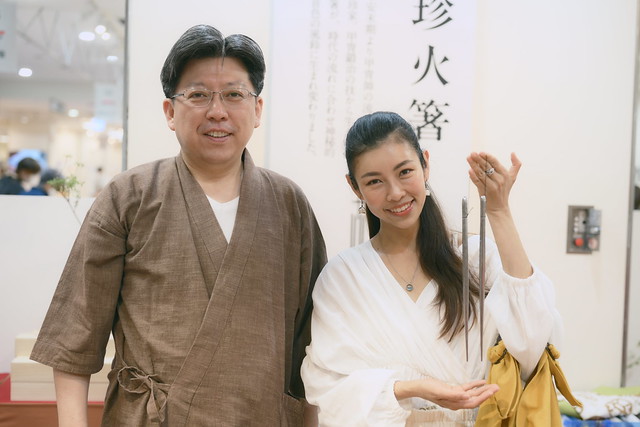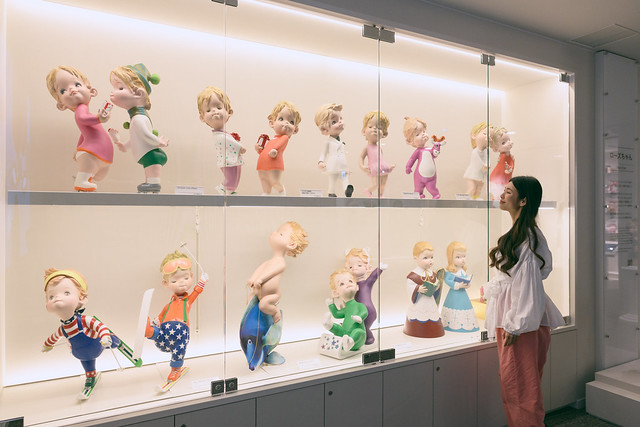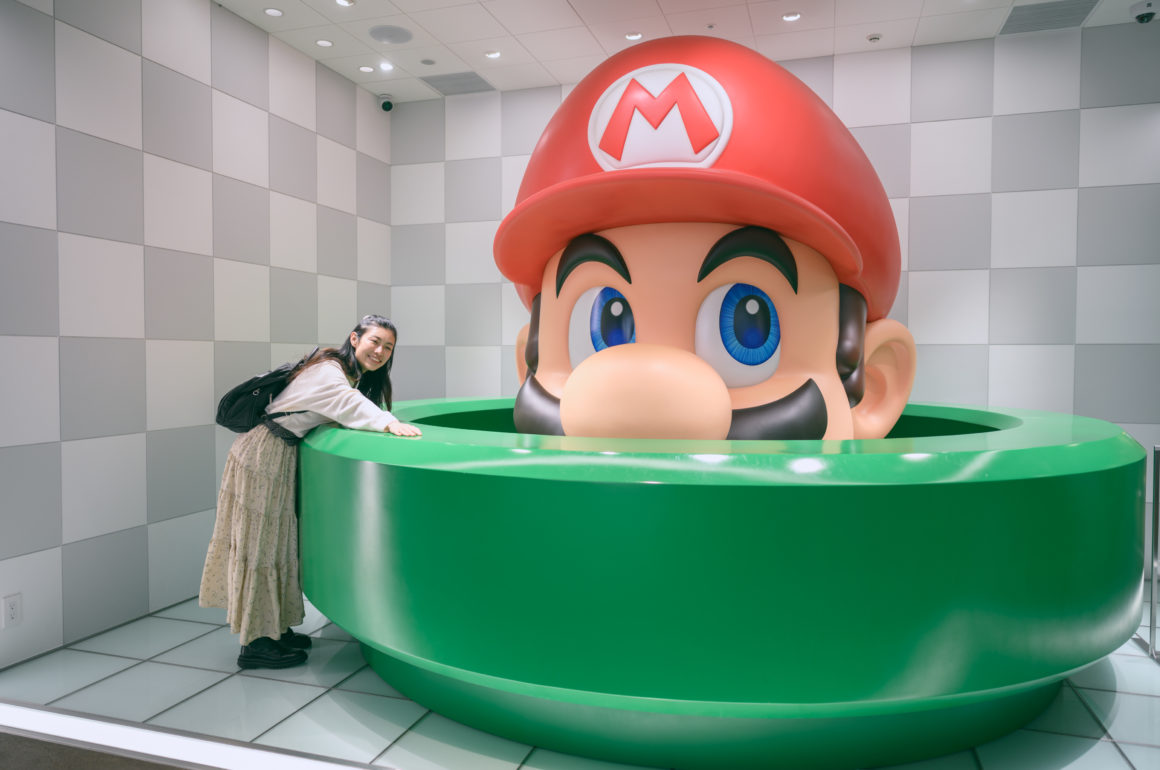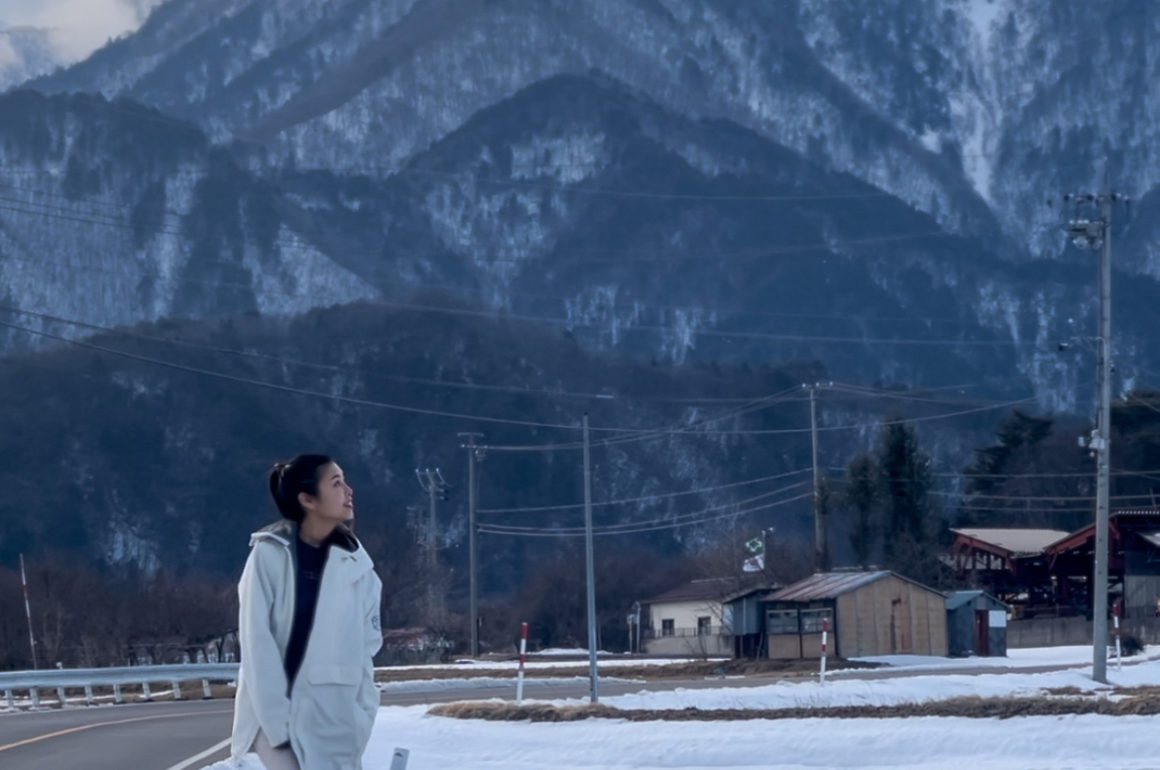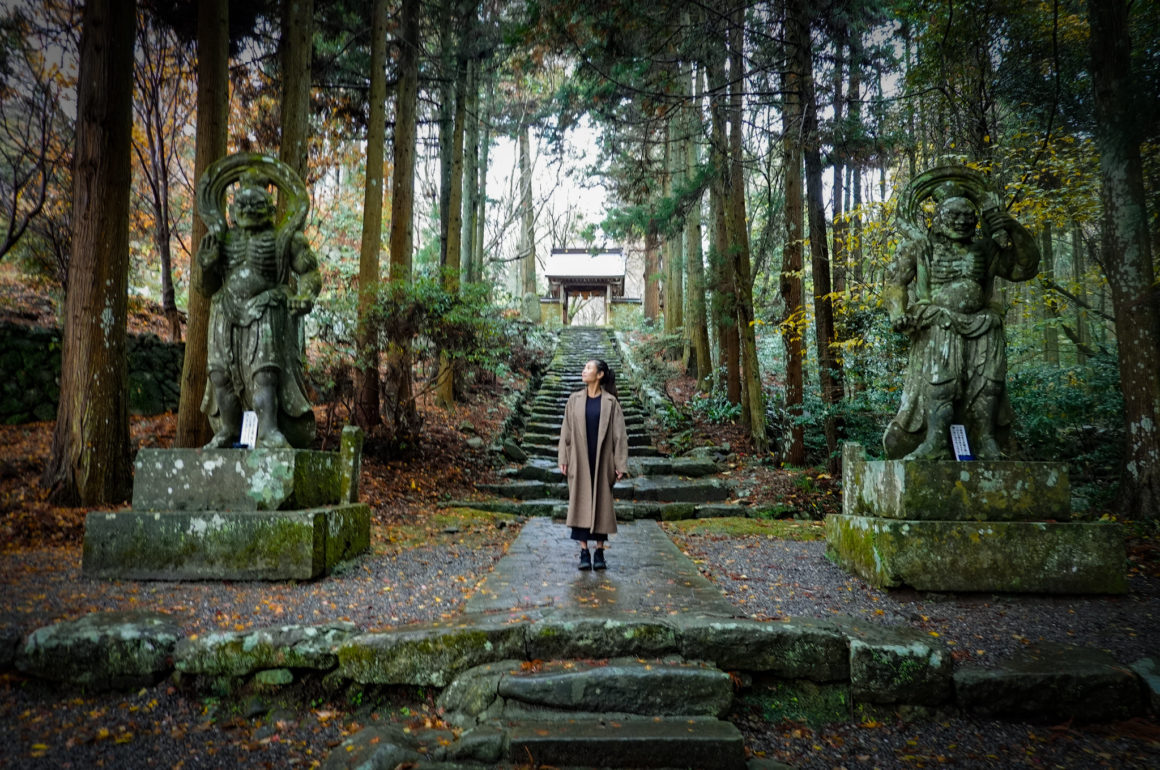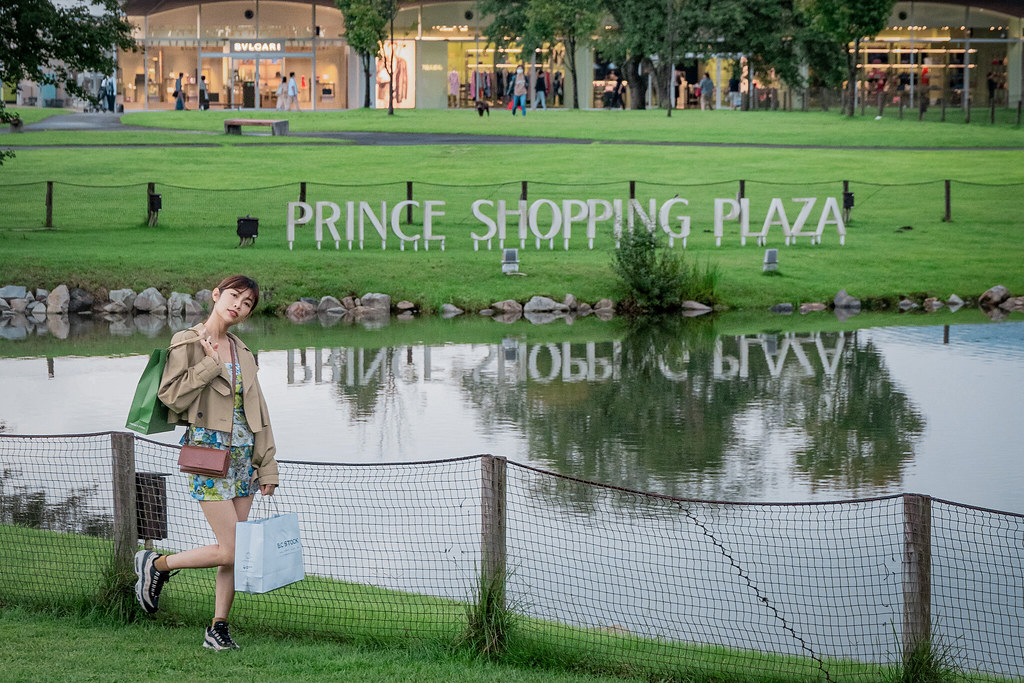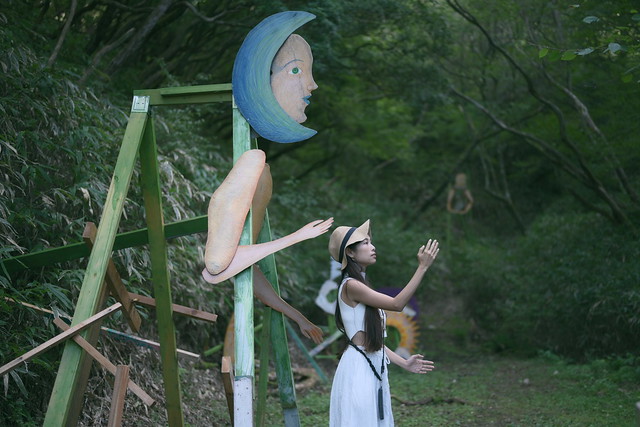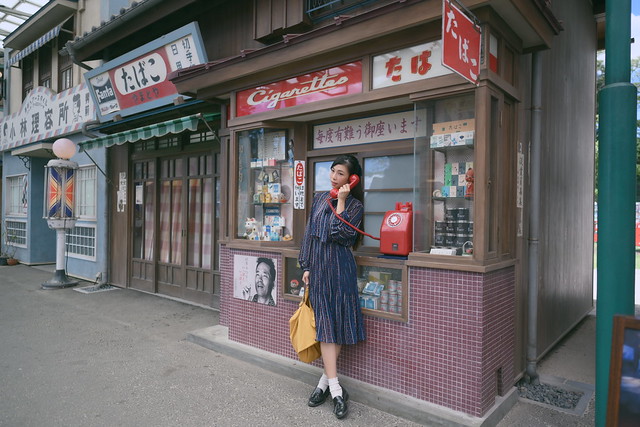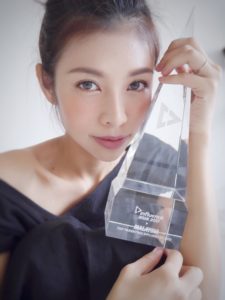
Read my Day 1 blog post here about abalone feast at Shima Peninsula.
Mie Prefecture is blessed with the abundance of both treasures from the ocean and land. In my previous post we have had (actually just me, but it could soon be your experience if you allow yourself to! Hehe.) glorious abalone and other assorted seafood in the Shima region, today I’m bringing you to explore the crème de la crème of beef – Matsusaka from its namesake city.
But first, let’s pick up where we left in the previous post and start with a great lookout point in Shima region.
Yokoyama Observation Deck

Uninterrupted view of the stunning Ago Bay from the Yokoyama Observation Deck.
The massive scale of nature took my breath away. There are 64 island (islets?) surrounding the Ago Bay, and it reminded me of Matsushima in Miyagi Prefecture – the final 3 Greatest Scenic View I’ve left on my list. Although I have not been to Matsushima, the view from Yokoyama actually left me wondering if Matsushima would be more enchanting than this.
There’s a little cafe at the top floor of the newly revamped deck where you get find specialty pastries and dessert produced by the local high school students. Indulge in a brief sweet moment while taking in one of the most beautiful views of Mie Prefecture.
Mikimoto Pearl Island
The visit to Mikimoto Pearl Island has changed my mind about the precious jewel. To be honest, I am not a jewellery kind of girl and I thought it was an attraction I don’t mind skipping on my already activity-filled itinerary.

But I’m glad I paid a visit to this world famous pearl brand and its birth place – Toba.

I’m sure you have heard of Mikimoto, but did you know that the founder, Mikimoto Kokichi (御木本幸吉), born in 1858, was the first person who had successfully create the first cultured pearl in the world?
Omg I just had a goosebump moment just like when first learnt about the inventor of instant noodles, Ando Momofuku’s story. Their life stories all share several similarities:
1. Undying support from their wise wife
2. Determination to get through multiple failures, near bankruptcy and hardship
3. A burning passion to seek innovation and improvement no matter the age
4. They both died at age 96
Creepy! Now I am really convinced that the saying – beside every great man, is a great woman – does hold water.
In 1927, Mikimoto met Edison, the great inventor who was in awe with his pearl cultivation. Edison commented, “Diamonds and pearls are the only things my laboratory could not produce.” – to which Mikimoto responded, “If you were the moon of the world of invention, I would simply be one of the many tiny stars”.
Oh. My heart.

I made it there just in time for the ama diver show. Instead of seeing dolphins glide along the water, you will see several ladies dip gracefully into the water to retrieve oysters that are ready for harvest.

Pay attention also to their special breathing technique in order to protect their lungs.
I have been to two different ama huts now, it was nice to finally see them in action for the first time. They were amazing.

In the Mikimoto Pearl Museum, you will find history of pearl cultivation documented with illustrations and real-life samples.

Natural pearls were in lots of random shapes. Mikimoto was also the person who has created the round-shaped pearls that are so widely seen today. I wouldn’t have known!!

Now the burning question is, how the hell are pearls even made? For sure the oysters don’t spit out random prized jewels every now and then when they feel like it.
No worries, the kind staff in the museum will be explaining about the process in details. It’s too complicated for me to explain it in 2019 English but basically you will need to perform a surgery to insert a round bead made of another oyster’s shell into the oyster and it will start to coat the bead with nacre (the shiny coating or what we call mother-of-pearl) as a natural defense to protect itself from an alient object in its body and therefore pearls are formed over time. So in a way, you can say that pearls are like your gallbladder stones, but shinier.
The first time I saw how a surgery was performed was in Uwajima, Ehime prefecture and I was clueless as hell but this visit has definitely opened my eyes the way you pour boiling water on clams. Haha.

Take the chance also to be a pageant queen or a princess for a moment, wearing Mikimoto’s pearl-encrusted crown. One can only wonder how much this is worth.

Though pearls are not my thing, I was quite interested in its pearl-calcium cosmetic range. The Chinese always have a thing for 珍珠粉 – pearl powder since ancient time, mostly for skin whitening and other beauty benefits.
If your wallet stops you from buying the prized precious pearls, at least check out their cosmetic counter and bring home some affordable skin care. I got a set of pearl masks to prepare for my next travel and I’m excited to use them!
Ise Grand Shrine
Ise Grand Shrine, or Ise Jingu, or just “Jingu”, needs no further introduction. I have also blogged about it twice. Once in 2017, and another time just weeks ago.

It was my third time here, and I loved it just as much.
One may expect the greatest shrine of whole Japan to be uniquely picturesque like Fushimi Inari in Kyoto, or at least photo-worthy like Hakone Shrine in Kanagawa. Not to disappoint you, but the shrine of Ise Jingu is extremely simple and plain, clad mostly ashen in earthy tones with the tamajari (玉砂利) – gravel that lines the sando (参道 – walkway to the shrine) and wooden structures of tones that seem to melt into each others. In fact, you are not even allowed to take photographs beyond the staircase to the main shrine (see above picture).
So, Ise Jingu is not an Insta photospot for social media boasting. Instead, it is a divine territory where one seeks to purify his soul and rediscovers gratitude in life. You can save the photo-taking for later, when you visit a nostalgic old town nearby (up right next!).
After having a fair share of spiritual quest and divine topics, let’s move on to something jovial and loved by everybody – delicious street snacks!
Oharai-machi & Okage Yokocho
Located just a short walking distance from Naiku (inner shrine of Ise), Oharai-machi is definitely not to be missed – for its many merchant stores selling an assortment of both modern and traditional craft, AND, endless delicious quick treats.

Okage Yokocho is located at the center of the district and is a newly build old town that replicates the Edo charm featuring lots of yummy eats. Here are some of my top picks.
Butasute Croquette

My no.1 top recommended snack here is Butasute’s mince meat croquette. Do expect a queue depending on the crowd as it is extremely popular!
A 100 yen coin buys you the juiciest mince meat croquette you’ll ever taste.

Can you believe that this is my first budget meal in Mie? After being spoilt with abalones, cheap but delicious street food is surprisingly comforting too.
Wakamatsuya

Just a short walk down the street is Wakamatsuya, a shop selling all sorts of nerimono – assorted grilled or fried fish cake. The signature is Ise Hiryozu, a stuffed fish cake filled with kamaboko, vegetables, mushroom and quail egg, it’s pretty filling so it’s best you share it with someone as there are many more food adventure waiting for you to discover!

From the same shop I also sampled Chizu-Bo, a fish cake filled with natural cheese that’s a hit with the young and old alike. It is said that over 1 million Chizu-Bo was sold and counting!
Fukusuke Ise Udon

Mie is well known for all sorts of luxurious gourmet, but honestly I had yet to hear about any nationally famous affordable eats. However, there’s one you should be checking out especially when you are in the area, and it is the Ise Udon.

I was told that it taste very very different from any udon served elsewhere in Japan, and when I received the bowl of piping hot noodle, I thought, oh my goodness, isn’t this loh shee fun??

Ise Udon’s texture is… unlike Sanuki from Kagawa that has an al dente chewy texture or Inaniwa from Akita that’s smooth and bouncy, Ise udon was… airy? Fluffy? Oh my god I don’t even know how to describe it. It is indeed very, very different, especially served in a thick soy broth that resembles our Malaysian/Singaporean version of black soy sauce.
Akafuku
Akafuku is mandatory, and even if you don’t buy it here you can get it at most of other souvenir shops or even at train stations or even outside of Mie, because it is that popular.

However, there probably isn’t another place that serves Akafuku-Gori!

The shaved ice is drizzled with rich matcha syrup, and as you dig into the featherlike snowflakes, you will find the hunted treasure – Akafuku red bean paste.
Shinon Daiko

I write this specially for myself. Haha.
Located just next to Fukusuke Ise Udon is a small event space, and there comes my favorite performance – Taiko drum show.

The performance expresses gratitude to the gods for prosperity and abundance of the town. It was mesmerizing. I love taiko. So much.
If you don’t wanna miss the taiko performance, do make sure you come by Oharai-machi during weekends.
Matsusaka City
We are moving on to another city – Matsusaka.
Only 15 minutes away by Kintetsu’s express train from Ujiyamada Station, Matsusaka is the perfect location to visit before or after Ise Jingu’s pilgrimage.
Anyway, no matter where you come from, I am making Matsusaka a compulsory stop on your itinerary, because… we are feasting again!
Gojouban Yashiki
Our first stop in Matsusaka is Gojouban Yashiki, an old town of samurai residences who guarded the Matsusaka Castle, preserved by its descendants until today.

But first, we are going to cosplay a little.

Matsusaka Momen – an Indigo-dyed cotton was sold by Matsusaka merchants in the Edo period. Check out Utsukushiya, an old storehouse converted into a traditional guest house where you can stay the night at, or simply rent an indigo cottom kimono to stroll around the old town for extra Insta points.

Walking down the Gojouban Yashiki lane in my pick of indigo cotton kimono. It’s exceptionally comfy by the way!

This is the view from Matsusaka park, overlooking the original residence of samurai, built in the year of 1863.
The story of how these samurai settled in Matsusaka was a heartwarming one. Originally, they served the great Tokugawa family in Kishu (now Wakayama), but one day they were ordered to serve a different master. However their loyalty to the Tokugawa was the life for them that they chose to give up their samurai status altogether, and were unemployed for 6 years.
For the whole 6 years they pleaded to be allowed back to work for the Tokugawa family, and finally they were given the duty of guarding the Matsusaka castle.

So incredibly neat with perfectly maintained hedge along the stone pavement. These houses are very rare as the descendants of the samurai still live in these houses, making them “living samura houses”. These residences have been designated as National Important Cultural Properties.

I was told that spring time is also popular as there are quite a few cherry blossom here so people are free to host BBQ or picnic sessions. While hanami‘ing.
Former Hasegawa Residence
Matsusaka is home to many affluent merchant families who made big names in Edo (Tokyo) trading all sorts of goods. The world-famous Mitsui conglomerate’s birthplace is right here, Matsusaka.

I visited the Hasegawa former residence, a successful merchant who traded cotton in Edo.

Most parts of the residence is preserved by its family as it was.

The residence was so massive I was wondering how many people were living here. There was also rice pots that looked like it could serve a whole village.

Just like many rich families, the residence also features a beautiful Japanese garden.

Can you imagine having this at your back yard?

And your very own shrine? This is bliss.
Isshobin Miyamachi Ten (Matsusaka Yakiniku)
The first time I had my dinner at Isshobin was back in 2017. Saying that it was unforgettable is an understatement.
In this 3 years, I believe I have sampled many, many many many other types and brand of beef, but Isshobin remains on top of my list as having the best value for the best quality of meat.

One may assume that to taste such an exquisite rank of beef, one must have it in a fancy, reservation-only 5 star hotel. Many are often surprised that Isshobin Matsusaka Yakiniku is a family friendly restaurant with the most casual atmosphere. You are welcome to come in your T shirts, jeans and sandals.
In fact, Isshobin is so casual that its yakiniku is served conveyor-belt style!!

Just to give perspective how special this breed is – every cattle has a unique 10-digit ID number one can search online to find information about its lineage and the farm it came from.
In the “quality” column, the quality of the beef is ranked and displayed.The label “special grade” (tokusan) indicates that the beef comes from Special Grade Matsusaka Cattle.

The best members to have a Matsusaka feast with. Thank you, Matsumoto san, Koyama san and lovely Kate. This trip will never be the same without their help.

Just like dining in conveyor belt sushi restaurants, you pick the plate that catches your eyes, and grill them fresh on your table stove.

This is “niku no oosama“, literally “king of meat”. One slice costs JPY1250.

Top class marbling that only spells luxuryyyyyy. It’s a famous saying that one can tell the high quality of fat which melts by the heat from your palm.

My recommended way (personal preference) to eat the beef is to order the non-marinated one. Just pure beef grilled to perfection (overcooking is a big no), served with just salt and wasabi if you prefer. There are other condiments such as shoyu or miso paste but I feel that a simple sprinkle of salt draws out the maximum umami from the tender meat.

I have developed an obsession for reimen (冷麺 – cold noodle) after each yakiniku session as the shime dish (the final dish). I’m very particular about my reimen, but this hit the spot.
Honestly I don’t get the watermelon slice, but the sourness of umeboshi (pickled plum) and the crisp of cucumber is just the right combination to a refreshing end of a rather fatty and potentially cloying meal.

This was our achievement. Guess how much it cost? Although I think you have already guessed a few times from my IG story and feed, but it’s worth repeating again and again:
JPY15000.
That’s like SGD195. That’s like less than SGD50 per person. For world-class A5 Matsusaka beef. And that, my friend, is what I call “kosupa saiko” – f**** awesome cost performance.
Watch the video below:
That’s all for today. I’ll leave you right here feeling hungry itching for ace beef. You are welcome.
In my next post, we are going to explore more nature, get trained to be a kickass ninja, before filling our tummy with yet another world-class beef.
Stay tuned.


